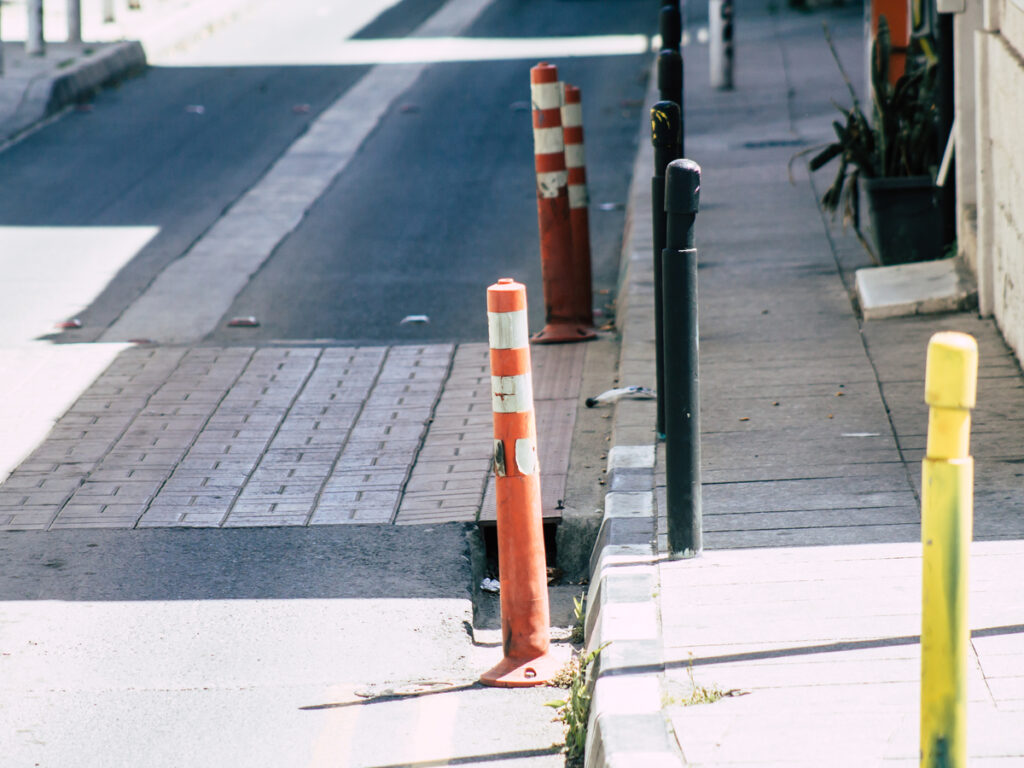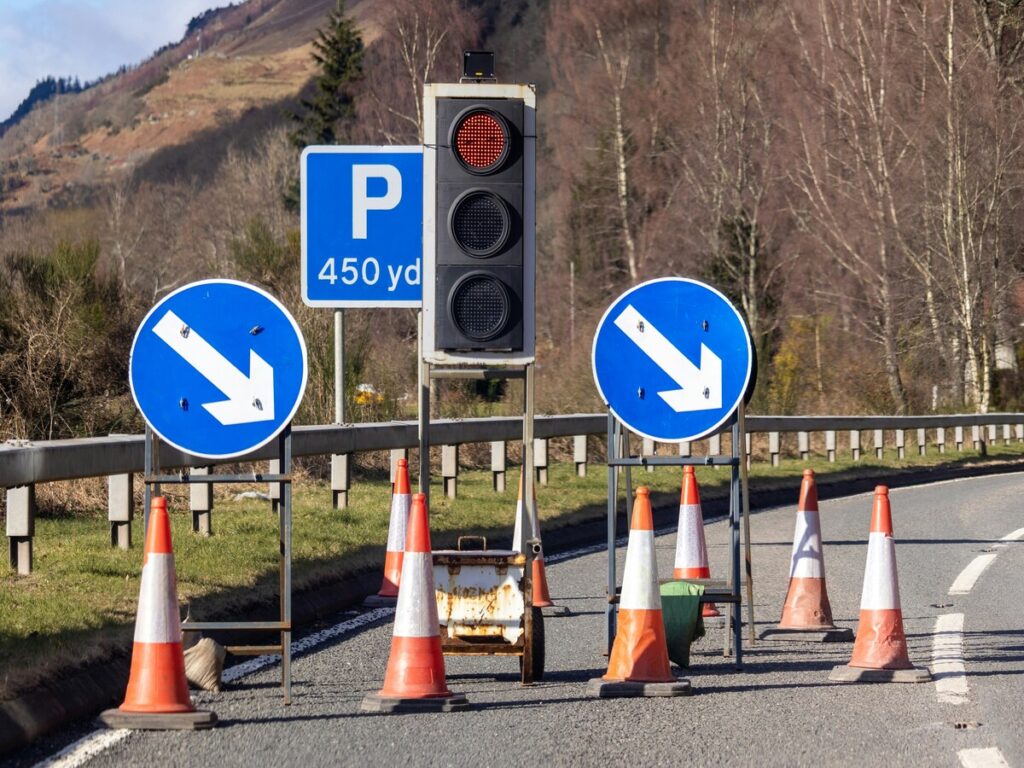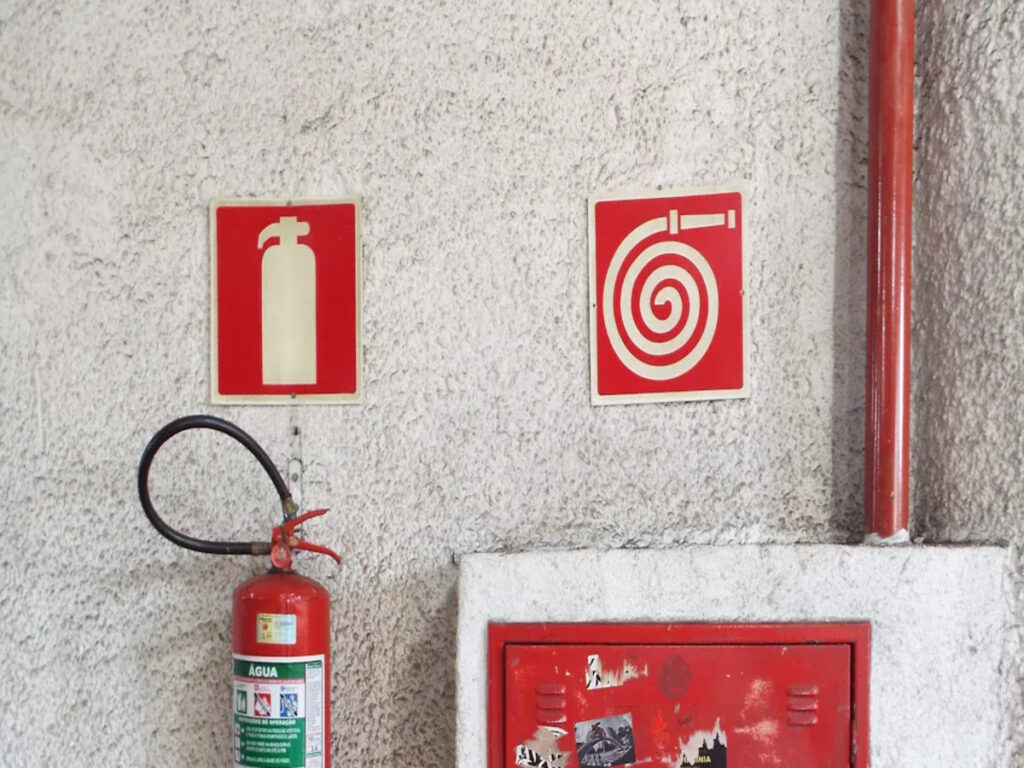
Abnehmbare Stahlstollstaaten bieten Ihnen eine flexible Zugangskontrolle für viele Räume. Mit Poller können Sie das Parken verwalten, Ereignisse schützen, oder Einsatzfahrzeuge durch. Eine gute Poller -Installation verwendet Hülsensysteme und starke Verriegelungsfunktionen. Sie müssen einen klaren Bollard -Installationshandbuch folgen, um den Prozess sicher und einfach zu gestalten. Wählen Sie die richtigen abnehmbaren Poller für Ihre Bedürfnisse. Halten Sie die Poller sauber und schützen Sie sie vor Rost für eine lang anhaltende Leistung. Regelmäßige Pflege hält Ihre Poller gut funktionieren.
Optraffic bietet hochwertige Stahlpoller Für einfache Entfernung und Installation entwickelt. Mit robusten Verriegelungsmerkmalen und langlebigen Materialien, Optraffic Steel Pollards bieten flexible Zugangskontrolllösungen für das Parken, Eventmanagement, und Zugang zum Notfallfahrzeug. Egal, ob Sie den Verkehrsfluss verwalten oder Räume schützen, Optraffic sorgt für zuverlässig, langlebige Leistung.
Key Takeaways
- Verwenden Sie Hülsensysteme für stark, stabil, und sichern abnehmbare Poller -Installationen, die bei Bedarf eine einfache Entfernung ermöglichen.
- Wählen Sie den richtigen Sperrmechanismus, wie Schlüsselschlösser oder Vorhängeschloss, Um die Poller sicher zu halten und einen schnellen Zugriff auf Notfälle zu ermöglichen.
- Planen Sie den Abstand des Bollards sorgfältig, um den Zugang zu kontrollieren, Räume schützen, und lassen Sie es sich sicher gehen.
- Durch die Reinigung regelmäßig Wartung durchführen, Schmierschlösser, und inspizieren auf Rost oder Schäden, um die Mauser gut funktionieren zu lassen.
- Schützen Sie Poller vor Winterschäden, indem Sie Trümmer löschen, Feuchtigkeitsansammlung verhindern, und Risse sofort reparieren.
Abnehmbare Stahl -Boller -Installationsmethodenübersicht
Installation des Ärmelsystems
Sie können ein Ärmelsystem verwenden, wenn Sie eine starke und sichere Boller -Installation wünschen. Diese Installationsmethode verwendet eine Bodenhülle in Beton. Sie legen die Hülse während des Installationsprozesses im Boden. Nach den konkreten Heilungen, Sie setzen den abnehmbaren Poller in die Hülse ein. Diese Methode hält den Poller stabil und aufrecht. Sie können den Poller entfernen, wenn Sie Zugriff zulassen müssen. Viele Parkplätze und Fußgängerzone verwenden diese Installationsmethode, da sie strenge Spezifikationen der Poller -Installation erfüllt. Das Hülsensystem schützt die Pollerbasis vor Beschädigungen und erleichtert den Ersatz einfach.
Tipp: Überprüfen Sie immer die Spezifikationen der Poller -Installation, bevor Sie beginnen. Auf diese Weise können Sie die richtige Hülle -Tiefe und -größe für Ihr Projekt auswählen.
Abnehmbare Optionen für Oberflächenmontage
Abnehmbare Pollern mit Oberflächenberg bieten eine andere Installationsmethode. Sie verankern diese Verkehrsnähte an der Oberfläche mit Schrauben oder Spezialplatten. Diese Installation eignet sich gut für temporäre Anforderungen an die Boller -Installation. Sie können die Poller schnell entfernen, wenn Sie den Raum öffnen müssen. Die Oberflächenmontageoptionen erfordern kein Graben oder Betonarbeiten. Sie können diese Installationsmethode für Ereignisse oder kurzfristige Parkkontrolle verwenden. Der Poller -Installationsprozess ist schnell und einfach.
Schlüsselunterschiede in den Installationsmethoden
Sie sollten die Hauptunterschiede zwischen diesen Installationsmethoden kennen. Die Installation des Ärmelsystems bietet Ihnen eine dauerhafte Bodenhülle. Diese Methode bietet mehr Stabilität und Sicherheit für Ihre abnehmbaren Stahlpoller. Abnehmbare Oberflächenmontage verwenden Oberflächenanker. Diese Installationsmethode ist einfacher und schneller, bietet jedoch möglicherweise nicht die gleiche Stärke. Beide Installationsmethoden helfen Ihnen dabei, Zugriff zu steuern und Räume zu schützen. Befolgen Sie immer die korrekten Spezifikationen für die Bollard -Installationsspezifikationen für Ihre ausgewählte Methode. Dies stellt sicher, dass Ihre Poller sicher funktionieren und länger dauern.
Grundlagen des Ärmelsystems und wichtige Vorteile
Was ist ein Ärmelsystem??
Ein Hülsensystem bietet Ihnen eine intelligente Möglichkeit, einen abnehmbaren Poller zu installieren. Während der Installation steckten Sie eine Erdhülle in den Beton. Diese Hülse hält den Poller aufrecht und stetig. Wenn Sie den Raum öffnen müssen, Sie können den Poller von Hand herausheben. Der Ärmel bleibt im Boden, Bereit für die nächste Verwendung. Diese Methode funktioniert gut für viele Bollard -Installationen, einschließlich Parkplätzen, Gehwege, und Ereignisräume. Sie erhalten eine sichere Passform für Ihren Poller, und Sie können es bei Bedarf schnell entfernen. Viele Menschen wählen dieses System für sein einfaches Bollarddesign und den einfachen Betrieb.
Kernkomponenten von Hülseninstallationen
Sie müssen die Hauptteile eines Hülsensystems für die Installation von Boller kennenlernen. Jede Teil spielt eine Schlüsselrolle, um Ihren Poller sicher und einfach zu bedienen zu halten. Hier sind die Kernkomponenten:
- Erdhülle: Dieser Teil befindet sich im Beton und hält den Poller.
- Hülsenkoppler: Dies schließt sich dem Poller zum Ärmel zusammen und hält ihn stabil.
- Verriegelungsmechanismus: Dies schützt den Poller an Ort und Stelle und stoppt die unerwünschte Entfernung.
- Bollard -Post: Dies ist der sichtbare Teil, der den Zugriff steuert.
- Abdeckplatte: Dies schützt die Hülseöffnung, wenn Sie den Poller entfernen.
Diese Teile arbeiten zusammen, um die Installation Ihrer Poller -Installation stark und zuverlässig zu machen. Sie können dieses Setup für viele Arten von Poller und Standorten verwenden.
Vorteile der Verwendung von Bodenärmel
Bodenärmel bieten Ihnen viele Vorteile für die Installation von Bollard. Sie erhalten Flexibilität, Sicherheit, und langfristiger Wert. Die folgende Tabelle zeigt, warum viele Menschen Bodenärmel für ihre Poller wählen:
| Leistungskategorie | Beschreibung |
|---|---|
| Flexibilität für den Zugang | Sie können Poller einfach für den Zugang zum Notfall oder für den Ereignisentwicklung entfernen. |
| Anpassungsfähigkeit der Installation | Sie können die beste Installationsmethode für Ihre Website und Ihre Bedürfnisse auswählen. |
| Sicherheit und Bequemlichkeit | Poller bleiben sicher, können aber ohne Schwierigkeiten entfernt werden. |
| Materielle Vorteile | Stahlpoller widerstehen Aufprall und Rost, Also dauern sie länger. |
| Anwendung Vielseitigkeit | Sie können an vielen Stellen Poller mit Erdhülsen verwenden, Wie Parken, Straßenstraßen, oder Flughäfen. |
Sie erhalten eine starke und dauerhafte Pollerinstallation mit Bodenärmel. Dieses System hilft Ihnen bei der Verwaltung des Zugriffs, Räume schützen, Und halten Sie Ihre Poller jahrelang gut arbeiten.
Typische Anwendungsfälle für abnehmbare Poller
Parkkontrolle und reservierte Räume
Sie können verwenden Abnehmbare Stahl -Poller zur Verwaltung von Parkplätzen und kontrollierte Räume. Diese Verkehrsnäher helfen Ihnen dabei, Bereiche für spezielle Benutzer oder Ereignisse zu blockieren. Durch abnehmbare Parkhollern können Sie nach Bedarf den Zugang öffnen oder schließen. Viele Parkplätze sind schwere Poller, die bis zum täglichen Gebrauch stehen und vor versehentlichen Beulen schützen. Sie können den Abstand von Poller auf Autos einstellen, Lastwagen, oder Lieferfahrzeuge. Crash-resistente Poller sorgen für zusätzliche Sicherheit, indem Fahrzeuge daran gehindert werden, eingeschränkte Zonen einzugeben. In geschäftigen Lose, Der richtige Abstand hilft Ihnen, den Verkehr zu leiten und die Menschen zu schützen. Bollern mit Crash-bewertetem Schützen schützen auch Ladenfronten und Büros, Reduzierung des Risikos von Fahrzeugkollisionen. Die Verwendung verschiedener Arten von Sicherheitsstoll in Parkplätzen erhöht die Sicherheit für Fahrer und Fußgänger.
Ereigniszugang und vorübergehende Schließungen
Abnehmbare Pollards eignen sich gut für Veranstaltungen und vorübergehende Schließungen. Sie können Poller schnell einrichten oder entfernen, um Menschenmassen und Fahrzeuge bei Konzerten zu steuern, Paraden, oder Festivals. Aufgrund großer Veranstaltungen, Sturzbewertung und schwere Poller helfen dabei. Diese Poller schützen die Menschen, indem sie Fahrzeuge daran hindern, überfüllte Räume zu betreten. Sie können manuelle, versenkbare Poller oder einziehbare Pollern verwenden, um den Zugang für Rettungsfahrzeuge oder Veranstaltungsmitarbeiter zu eröffnen. Viele Städte nutzen Parkplatzpoller auf Festivals, um den Verkehr zu verwalten und die Teilnehmer zu schützen. Der Abstand von Poller ist wichtig für den Auffluss und die Sicherheit des Publikums. Crash-resistente Poller haben sich bei wichtigen Ereignissen wie der FIFA-Weltmeisterschaft und der Rose Parade als wirksam erwiesen, wo sie Tausende von Menschen schützten. Bollard -Anwendungen im Eventmanagement zeigen, wie flexibel und zuverlässig diese Barrieren sein können.
Not- und Service -Zugangspunkte
Sie müssen die Notfallrouten klar und sicher halten. Abnehmbare Stahlstollpoller helfen Ihnen, indem Sie den regulären Verkehr blockieren, aber eine schnelle Entfernung für Feuerwehrautos oder Krankenwagen ermöglichen. Manuelle Einziehbare Poller und einziehbare Poller ermöglichen Ihnen einen schnellen Zugriff, wenn Sekunden zählt. Hochleistungs-Poller und Crash-bewertete Poller schützen Krankenhäuser, Kraftwerke, und Unterkünfte von unerwünschten Fahrzeugen. Sie können den Abstand von Poller an Rettungsfahrzeuge einstellen. Parkplatzpoller helfen auch dabei, spezielle Fahrspuren für Ersthelfer zu erstellen. Die Verwendung verschiedener Arten von Sicherheitsstapfen an Servicepunkten erhöht die Sicherheit für alle. Bollard -Anwendungen in der Notfallplanung zeigen, wie diese Hindernisse sowohl Schutz als auch Zugang unterstützen.
Notiz: Planen Sie immer den Abstand von Pollers sorgfältig. Der richtige Abstand hält die Menschen in Sicherheit und ermöglicht es Fahrzeugen, bei Bedarf zu bestehen.
Schritt-für-Schritt

Standortbewertung und Vorbereitung
Bereiten Sie sich auf die Installation von Boller vor, indem Sie Ihre Website überprüfen. Suchen Sie nach unterirdischen Versorgungsunternehmen und messen Sie den Bereich. Markieren Sie die genauen Stellen für jeden Poller. Gute Planung hilft Ihnen, später Fehler zu vermeiden. Vorbereitung auf die Installation von Bollard bedeutet, dass Sie Trümmer löschen und sicherstellen. Dieser Schritt legt die Bühne für einen reibungslosen Installationsprozess fest.
Ausgrabung und Ärmelplatzierung
Löcher für die gemahlenen Ärmel graben. Jedes Loch sollte mit der Tiefe und Breite in Ihren Installationsrichtlinien übereinstimmen. Legen Sie die Hülse in der Mitte des Lochs. Stellen Sie sicher, dass der Ärmel aufrecht steht. Verwenden Sie bei Bedarf eine vorübergehende Klammer. Dieser Schritt hält den Poller während des Installationsprozesses stabil.
Betongießen und Heilung
Beton um den Ärmel gießen. Füllen Sie das Loch an der Oberfläche. Tippen Sie sanft auf die Hülse, um Lufttaschen zu entfernen. Lassen Sie das Beton für die in Ihren Installationsrichtlinien aufgeführte Zeit heilen. Beeilen Sie diesen Schritt nicht. Durch die richtige Heilung wird Ihrer Poller-Installation langlebige Stärke verleiht.
Einfügen und Ausrichtung der Poller
Setzen Sie den Poller in die gehärtete Hülse ein. Befolgen Sie diese Best Practices für die präzise Installation und Ausrichtung der Poller:
- Verwenden Sie ein Spirit -Level, um die Pollern gerade und ausgerichtet zu halten. Dies verbessert das Aussehen und die Qualität Ihrer Installation.
- Bodenbedingungen überprüfen. Für weiche Boden, Verwenden Sie zusätzliche Beton oder Anker für Stabilität.
- Halten Sie alle Poller auf der gleichen Höhe und legen Sie sie gleichmäßig auf. Die meisten Poller stehen 0.5 Zu 1 Meter groß und sitzen 2.5 Zu 3 Meter auseinander.
- Wählen Sie starke Materialien und sichern Sie Vorrichtungen. Dies hilft, Diebstahl und Vandalismus zu verhindern.
Verriegelungsmechanismus Setup
Richten Sie den Verriegelungsmechanismus für Pollards gemäß Ihren Installationsrichtlinien ein. Das richtige Verriegelungssystem hält Ihre Pollern sicher, ermöglicht jedoch bei Bedarf eine schnelle Entfernung. Die folgende Tabelle zeigt, wie unterschiedliche Verriegelungsmechanismen die Entfernungszeit und den Notfallzugang beeinflussen:
| Pollerstil | Zeit entsperren/entfernen | Wichtige Betriebsschritte und Notizen |
|---|---|---|
| Vorhängeschloss abnehmbar | 60–75 Sekunden | Schlüssel, der für Vorhängeschläge benötigt wird; Schalte und Entfernen Sie Poller. |
| Hydrantschlüssel abnehmbar | 50–60 Sekunden | Verwenden Sie den Hydrantschlüssel, um Poller zu entsperren und zu entfernen. |
| Vorhängeschloss zusammenklappbar | 30–35 Sekunden | Schalte und bricht die Poller auf. |
| Hydrantschlüssel zusammenklappbar | 20 Sekunden | Verwenden Sie Hydrantschlüssel, um Poller freizuschalten und zusammenzubrechen. |
| Durch Apparat Stoßfänger zusammenklappbar | 5 Sekunden | Pollards kollabieren beim Aufprall; Schnelle Reparatur möglich. |
Die ordnungsgemäße Verriegelungsmechanismus -Setup verbessert sowohl die Sicherheits- als auch die Notfallreaktion.
Endgültige Stabilitäts- und Sicherheitskontrollen
Beenden Sie den Installationsprozess, indem Sie jeden Poller überprüfen. Stellen Sie sicher, dass jeder Poller gerade steht und sich sicher sperrt. Testen Sie den Sperrmechanismus für Pollards, um zu bestätigen, dass er funktioniert. Überprüfen Sie Ihre Installationsrichtlinien ein letztes Mal. Ein sorgfältiger endgültiger Scheck stellt sicher.
Verriegelungsmechanismen und Sicherheitsoptionen für abnehmbare Poller
Schlüsselverriegelungssysteme
Sie können mit Keyed Lock-Systemen die Sicherheit in Hochsicherheitsbereichen steigern, um die Sicherheit zu steigern. Diese Schlösser passen in den Poller und halten sie fest an Ort und Stelle. Sie setzen einen speziellen Schlüssel ein, um den Poller freizuschalten. Dieses System eignet sich sowohl für manuelle, einziehbare Poller als auch für automatische, einziehbare Poller. Viele Parkplätze und Straßen der Stadt verwenden schlüssellierte Schlösser, weil sie die unerwünschte Entfernung einstellen. Sie können dieser Methode für Crash-bewertete Poller und Crash-resistente Poller vertrauen. Schlüsselschlösser helfen Ihnen bei der Steuerung, wer zugreifen kann. Sie halten Ihre Poller sicher und bereit für den Gebrauch.
Tipp: Halten Sie Ihre Schlüssel immer an einem sicheren Ort. Geben Sie sie nur dem vertrauenswürdigen Personal, um die Sicherheit aufrechtzuerhalten.
Vorhängeschlossbasis Mechanismen
Auf dem Vorhängeschlossbasis können Sie eine einfache Möglichkeit zum Sperren und Freischalten von Poller geben. Sie befestigen ein starkes Vorhängeschloss an einer Stahlschleife oder einem Riegel am Poller. Diese Methode eignet. Sie können Vorhängeschloss sowohl für den vorübergehenden als auch für dauerhafte Sicherheitsanforderungen verwenden. Vorhängeschloss sind leicht zu ersetzen, wenn Sie einen Schlüssel verlieren. Sie können auch auf wetterfeste Vorhängeschloss für Outdoor-Poller ein Upgrade durchführen. Viele Hochsicherheitsbereiche verwenden Vorhängeschloss für schnellen Zugang und starke Sicherheit. Vorhänferbasierte Systeme eignen sich gut für Sturzbewertung und Crash-resistente Poller.
| Sperrtyp | Bester Anwendungsfall | Sicherheitsstufe | Benutzerfreundlichkeit |
|---|---|---|---|
| Schlüsselschloss | Hochsicherheitsgebiete | Hoch | Mäßig |
| Vorhängeschloss | Vorübergehende Schließungen | Medium | Einfach |
| Automatisches System | Geschäftige Zugangspunkte | Sehr hoch | Sehr einfach |
Anti-Diebstahl-Designmerkmale
Sie können Poller mit Anti-Diebstahl-Funktionen für zusätzliche Sicherheit und Sicherheit auswählen. Einige Poller haben versteckte Verriegelungsmechanismen, die die Manipulationen aufhören. Andere verwenden verstärkte Stahl oder spezielle Formen, um erzwungene Entfernung zu widerstehen. Automatische, versenkbare Poller umfassen häufig Alarme oder Sensoren für Bereiche mit hoher Sicherheit. Sie können auch versenkbare Poller mit Verriegelungsstiften finden, die nur mit einem codierten Schlüssel losgeben. Diese Merkmale schützen Ihre Poller vor Diebstahl und Schaden. Sie halten Ihren Sicherheitsplan stark und Ihr Eigentum sicher.
Notiz: Mit Diebstahlfunktionen können Sie Sicherheitsregeln an geschäftigen Orten wie Flughäfen erfüllen, Stadien, und Regierungsgebäude.
Sie können Schlüsselschlösser kombinieren, Vorhängeschloss, und Anti-Diebstahl-Funktionen zur Schaffung eines starken Sicherheits- und Sicherheitssystems. Dieser Ansatz hält Ihre Poller für jede Herausforderung in Hochsicherheitsbereichen vor.
Saisonale Schutz- und Korrosionsprävention bei abnehmbaren Stahlstollpoller

Wartung der Winterhülle
Sie müssen jeden Poller überprüfen, bevor der Winter beginnt. Kaltes Wetter kann zu Problemen für Ihren Poller führen, wenn Sie sich nicht vorbereiten. Entfernen Sie Schmutz und Blätter von der Hülle. Stellen Sie sicher, dass der Ärmel klar bleibt, damit Sie den Poller leicht einfügen oder entfernen können. Wenn Schnee oder Eis die Gegend bedeckt, Bürsten Sie es vom Poller und der Hülse weg. Sie sollten auch nach Rissen im Beton um den Poller suchen. Reparieren Sie sofort kleine Risse, um zu verhindern, dass Wasser hineinkommt und einfriert. Dies hält Ihren Poller sicher und bereit für den ganzen Winter über den Gebrauch.
Ärmelfeuchtigkeit und Gefrierschutz
Feuchtigkeit kann Ihre Pollerhülle in kalten Monaten beschädigen. Wasser im Ärmel kann einfrieren und ausdehnen, Dies kann dem Poller schaden oder es schwierig machen, zu entfernen. Sie können eine Hülsenkappe verwenden, um Wasser herauszuhalten, wenn Sie den Poller entfernen. Einige Leute fügen am Boden der Hülle eine kleine Menge Sand oder Kies hinzu. Feldtests in harten Klimazonen zeigen, dass die Verwendung von Stahlärmelen mit speziellen Gefriermethoden beiträgt, den Boden und das Bollardsystem zu schützen.
- Temperaturprüfungen zeigen, dass das Einfrieren in Stadien stattfindet, mit Frost, der nach dem Boden gefriert wird.
- Die Stahlhülle gleicht Wasser und Erddruck aus, Halten Sie Wasser und Sand davon ab.
- Tests und Computermodelle bestätigen, dass diese Methode den Poller und den Boden stabil hält, Sogar in Nass, kalte Orte.
- Dieser Ansatz senkt das Risiko eines Schadens und hält Ihren Poller bei hartem Wetter gut funktionieren.
Korrosionsverhütung der Stahloberfläche
Sie möchten, dass Ihr Poller viele Jahre dauert. Rost stoppen, Wählen Sie einen Poller mit einem verzinkten oder pulverbeschichteten Finish. Diese Beschichtungen schützen den Stahl vor Regen, Schnee, und Salz. Reinigen Sie Ihren Poller oft, Besonders nach Stürmen oder wenn Salz auf Straßen verwendet wird. Wenn Sie Chips oder Kratzer sehen, den Poller sofort neu streichen. Dies verhindert, dass sich Rost ausbreitet. Eine saubere, beschichtetes Bollard sieht gut aus und funktioniert besser.
Schmierung für die Sperrenkomponenten
Teile an Ihrem Poller sperren, müssen Pflege benötigen, zu. Kaltes und nasses Wetter kann Schlösser oder Einfrieren bringen. Verwenden Sie ein Sprühschmiermittel auf dem Schloss und bewegliche Teile des Poller. Mach das alle paar Monate, oder öfter im Winter. Wischen Sie zusätzliches Öl weg, damit sich Schmutz nicht aufbaut. Mit einem glatten Schloss können Sie den Poller schnell entfernen oder befestigen. Die reguläre Pflege hält Ihren Poller in jeder Saison bereit für die Handlung.
Wartung und Fehlerbehebung nach der Installation
Routine -Inspektionsplan
Sie müssen jeden Poller und alle Poller nach einem regulären Zeitplan überprüfen. Monatliche Inspektionen helfen Ihnen dabei, Probleme frühzeitig zu erkennen. Suchen Sie nach Rissen im Poller oder im Beton um ihn herum. Überprüfen Sie den Rost auf der Oberfläche. Achten Sie auf Anzeichen von Verschleiß auf beweglichen Teilen. Wenn Sie Schaden sehen, Beheben Sie es sofort. Verwenden Sie diese Checkliste, um Ihre Poller in Topform zu halten:
- Überprüfen Sie jeden Poller auf Risse, Rost, oder Dellen.
- Testen Sie den Verriegelungsmechanismus auf allen Poller, um sicherzustellen, dass er reibungslos funktioniert.
- Überprüfen Sie die Pollerhülle auf Schmutz oder Wasseraufbau.
- Tragen Sie vor dem kalten Wetter Enteisungsmittel auf, um Eis um den Poller zu verhindern.
- Entfernen Sie Schnee von etwa jedem Poller, um Blockaden zu vermeiden.
- Stellen Sie sicher, dass Anti-Korrosionsbeschichtungen am Poller noch stark sind.
- Behandeln Sie alle Rostflecken auf dem Poller mit Rostentferner und einer neuen Schutzbeschichtung.
- Rufen Sie einen Fachmann an, wenn Sie einen beliebigen Schaden an einem Poller finden.
Ein guter Inspektionsplan bewahrt Ihre Pollers sicher und arbeitet jahrelang.
Reinigungsverfahren für Langlebigkeit
Sie möchten. Reinigen Sie jeden Poller mit warmem Seifenwasser und einer weichen Bürste. Dies entfernt Schmutz und Trümmer, die die Oberfläche der Poller beschädigen können. Spülen Sie den Poller mit sauberem Wasser aus und trocknen Sie ihn mit einem weichen Tuch ab. Für Poller in geschäftigen Bereichen, Reinigen Sie sie öfter. Schmieren Sie die beweglichen Teile des Pollers, wie der Hersteller vorschlägt. Dies hält den Poller einfach zu bedienen und stoppt Abnutzung. Überprüfen Sie immer den Poller auf Kratzer oder Chips in der Beschichtung. Beheben Sie diese sofort, um den Start von Rost zu verhindern.
Identifizieren und Behebung gemeinsamer Probleme
Manchmal, Möglicherweise finden Sie einen Poller, der nicht so funktioniert, wie er sollte. Wenn ein Poller im Ärmel steckt, Überprüfen Sie im Inneren auf Schmutz oder Eis. Reinigen Sie den Ärmel und versuchen Sie es erneut. Wenn sich der Verriegelungsmechanismus am Poller steif anfühlt, Fügen Sie den beweglichen Teilen Schmiermittel hinzu. Wenn Sie Rost auf einem Poller sehen, Verwenden Sie einen Rostentferner und streifen Sie den Spot neu aus. Wenn sich ein Poller lehnt oder sich locker fühlt, Überprüfen Sie die Betonbasis auf Risse. Ziehen Sie die Schrauben fest oder rufen Sie einen Techniker an, um Hilfe zu erhalten. Handeln immer schnell, wenn Sie ein Problem mit einem Poller finden. Schnelle Korrekturen bewahren alle Ihre Hollkards sicher und bereit für den Gebrauch.
Sie verbessern die Sicherheit und Haltbarkeit, wenn Sie jeden Schritt im Bollard -Installationshandbuch befolgen. Die Verwendung von Hülsensystemen und sicheren Verriegelungsmechanismen erhalten einen flexiblen Zugang und einen starken Schutz. Regelmäßige Wartung, Reinigung, und Korrosionsprävention hilft, dass Ihre abnehmbaren Poller länger dauern und besser funktionieren. Studien zeigen, dass diese Best Practices die Pollards jahrelang zuverlässig und sicher halten. Bewerten Sie Ihre Site -Anforderungen, bevor Sie die richtige Bollard -Installation auswählen. Sorgfältige Planung und Instandhaltung stellen sicher, dass Ihre Poller jeden Tag Menschen und Eigentum schützen.
Für einen detaillierten Überblick über die Best Practices von Bollard -Installation und Wartung, Schauen Sie sich den Blog an Installation der Verkehrskontrollpfosten & Wartung: Komplette Leitfaden für langfristige Sicherheit. Es bietet kompetente Ratschläge zur Installation, pflegen, und gewährleisten Sie die langfristige Sicherheit und Wirksamkeit Ihrer Pollersysteme.
FAQ
Wie tief sollte ich eine Bodenhülle für einen abnehmbaren Poller installieren?
Sie sollten mindestens die meisten gemahlenen Ärmel installieren 12 Zu 18 Zoll tief. Überprüfen Sie immer die Anweisungen des Herstellers für Ihren speziellen Poller. Tiefere Ärmel geben Ihnen mehr Stabilität und Sicherheit.
Kann ich entfernbare Poller auf vorhandenem Beton installieren??
Ja, Sie können die abnehmbaren Oberflächenmontage auf vorhandenen Beton installieren. Sie verwenden Ankerschrauben, um sie zu sichern. Für Hülsensysteme, Möglicherweise müssen Sie Bohrerlöcher für die Ärmeln kern.
Welche Art von Verriegelungsmechanismus eignet sich am besten für Hochsicherheitsbereiche??
Keyed Lock-Systeme bieten die beste Sicherheit für Hochrisikostandorte. Sie steuern den Zugriff mit einem einzigartigen Schlüssel. Diese Schlösser verhindern die nicht autorisierte Entfernung und halten Ihre Fläche geschützt.
Wie oft sollte ich meine abnehmbaren Stahlstollpoller inspizieren und aufrechterhalten??
Sie sollten Ihre Poller jeden Monat inspizieren. Suchen Sie nach Rost, Schmutz, oder Schaden. Reinigen und schmieren Sie bewegliche Teile nach Bedarf. Regelmäßige Schecks helfen Ihnen dabei, Probleme frühzeitig zu erfassen und Ihre Poller gut funktionieren zu lassen.



















